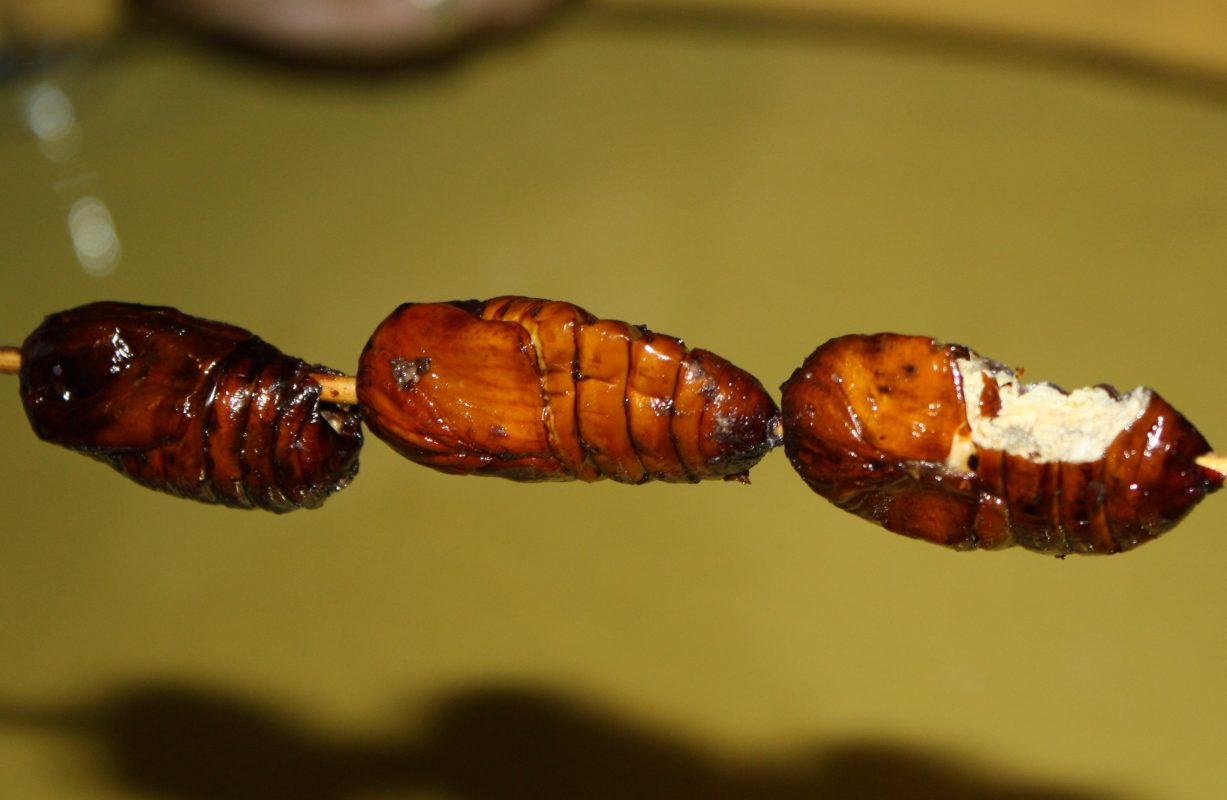Silkworms as a Food
Populist scientists generally agree that by 2050, Earth will see over 9 billion human inhabitants. By that time – recently published in a UN report – it is predicted that over 1/3rd of our protein intake will consist of edible insects. Silkworms are predicted to make up a large proportion of this amount. This means – like it or not – that eating Silkworms as a food is going to be a reality. Insects on average require 6 times less feed per pound of protein, making them both an economically and environmentally responsible food choice
As weird as it may sound to us Western Cultures, like many insect species, Silkworm pupae are already eaten by many cultures. This is mostly in Asia, however also sporadically in some African, Middle Eastern, and Eastern European nations. For example:
- In Assam, they are boiled for extracting Silk. The boiled pupae are eaten directly with salt or fried with chilli pepper or herbs as a snack or dish.
- Koreans boil and season Silkworms to make a popular snack food known as beondegi.
- Chinese street vendors sell roasted Silkworm pupae.
- Japanese Silkworms are usually served as a tsukudani (佃煮). For this variation, they are boiled in a sweet-sour sauce made with soy sauce and sugar.
- The Vietnamese make a similar variation, however they are known as con nhộng.
- Silkworms have also been proposed for cultivation by astronauts as space food on long-term missions.
If you get are ever feeling adventurous and get some Silkworms for food from our e-Shop, let us know how you go in our community here!

